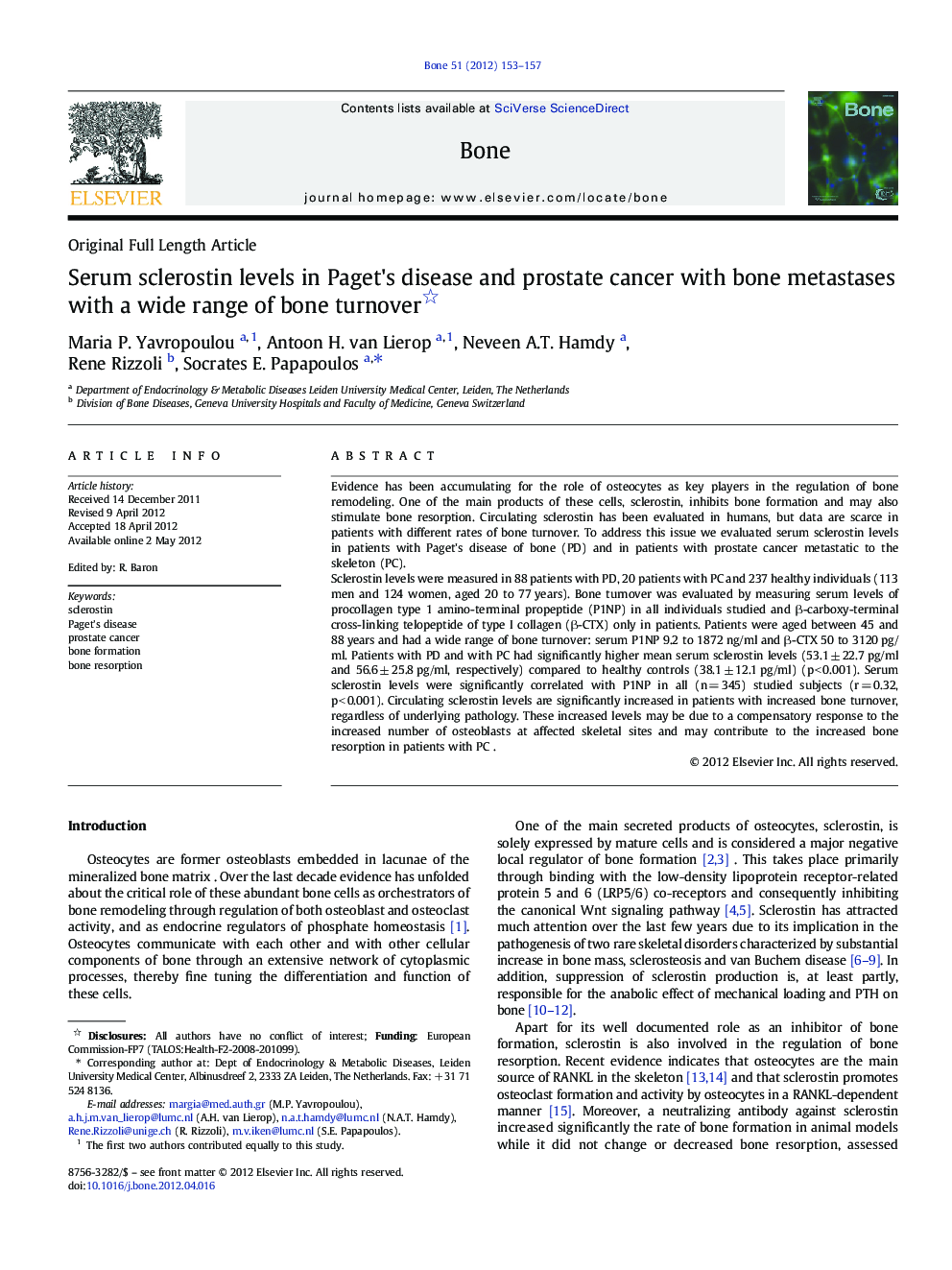| Article ID | Journal | Published Year | Pages | File Type |
|---|---|---|---|---|
| 5891050 | Bone | 2012 | 5 Pages |
Evidence has been accumulating for the role of osteocytes as key players in the regulation of bone remodeling. One of the main products of these cells, sclerostin, inhibits bone formation and may also stimulate bone resorption. Circulating sclerostin has been evaluated in humans, but data are scarce in patients with different rates of bone turnover. To address this issue we evaluated serum sclerostin levels in patients with Paget's disease of bone (PD) and in patients with prostate cancer metastatic to the skeleton (PC).Sclerostin levels were measured in 88 patients with PD, 20 patients with PC and 237 healthy individuals (113 men and 124 women, aged 20 to 77 years). Bone turnover was evaluated by measuring serum levels of procollagen type 1 amino-terminal propeptide (P1NP) in all individuals studied and β-carboxy-terminal cross-linking telopeptide of type I collagen (β-CTX) only in patients. Patients were aged between 45 and 88 years and had a wide range of bone turnover: serum P1NP 9.2 to 1872 ng/ml and β-CTX 50 to 3120 pg/ml. Patients with PD and with PC had significantly higher mean serum sclerostin levels (53.1 ± 22.7 pg/ml and 56.6 ± 25.8 pg/ml, respectively) compared to healthy controls (38.1 ± 12.1 pg/ml) (p < 0.001). Serum sclerostin levels were significantly correlated with P1NP in all (n = 345) studied subjects (r = 0.32, p < 0.001). Circulating sclerostin levels are significantly increased in patients with increased bone turnover, regardless of underlying pathology. These increased levels may be due to a compensatory response to the increased number of osteoblasts at affected skeletal sites and may contribute to the increased bone resorption in patients with PC .
⺠Patients with Paget's disease or bone metastatic prostate cancer have higher serum sclerostin levels than healthy controls. ⺠Sclerostin levels are positively correlated with levels of P1NP in pooled cohort of patients and healthy controls. ⺠Sclerostin levels are correlated with levels of P1NP and CTX in patients with bone metastatic prostate cancer.
